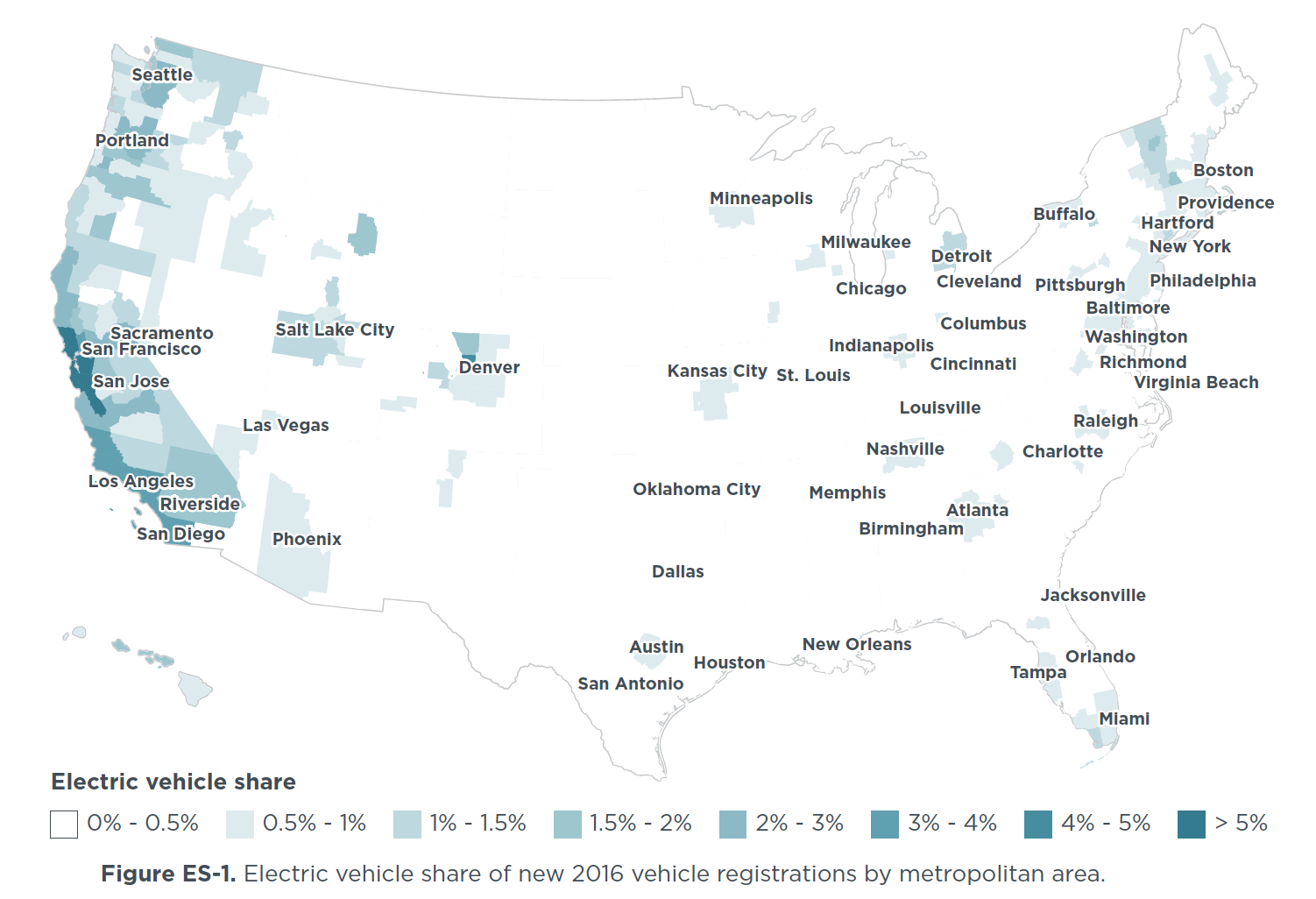White paper
Expanding the electric vehicle market in U.S. cities
This paper assesses the U.S. electric vehicle market and the actions driving it, focusing on the 50 most populous U.S. metropolitan areas. This work analyzes the connections among various state and local policies, public and workplace charging infrastructure, consumer incentives, model availability, and the share of new vehicles that are plug-in electric (both fully electric and plug-in hybrid). The figure illustrates the share of new vehicle registrations that are plug-in electric across U.S. metropolitan areas in 2016. The 50 most populous metropolitan areas are labeled. As shown, the San Jose area had the highest share at 10%, followed by other California areas (4% to 6%) and markets in Colorado, Hawaii, Oregon, Vermont, and Washington (2% to 4%). Overall, the share of new vehicles that are plug-in electric in these 50 areas is 1.2%, about 3 times the proportion in the rest of the United States.
Our analysis leads us to the following four conclusions:
Growth in the electric vehicle market requires many actions by many players. Actions by many local, state, and utility stakeholders work to reduce consumer barriers by means of policy, incentives, and awareness campaigns. Such a comprehensive approach is exemplified by California, where the Zero Emission Vehicle regulation helps to catalyze automaker marketing and model availability, complementary policy incentives, and sustained investment in charging infrastructure.
Expansion of electric vehicle options is a prerequisite to market growth. The five leading electric vehicle markets by volume, representing nearly half of all U.S. electric vehicle sales, each had at least 24 available electric vehicle models in 2016. Yet across the major U.S. markets, about half of the population has access to 10 or fewer electric models, and many dealerships have very low inventories of those models. Availability of more models across vehicle types, offered at a range of price points and passenger capacities, is an essential precursor to more substantial market development.
Consumer incentives remain key to growing the electric vehicle market. Electric vehicle uptake is linked with incentives that reduce the effective electric vehicle cost. Ten of the top 12 major metropolitan areas with the highest electric vehicle uptake offered consumer incentives typically worth $2,000 to $5,000. Consumers in California markets and Salt Lake City were offered both consumer purchase incentives and carpool lane access, and those in Denver and Seattle had substantial purchase incentives. Such incentives increase awareness and reduce the initial cost barrier while electric vehicle range and cost improvements continue to expand the market, ultimately reducing the need for incentives.
Electric vehicle charging infrastructure remains a barrier in many markets. Our analysis finds that the availability of public charge points and workplace charging is linked with electric vehicle market uptake. The markets of Charlotte, Detroit, Kansas City, Minneapolis, Pittsburgh, Providence, and Virginia Beach showed charging infrastructure growth of approximately 30% to 80%, corresponding with at least a doubling of their electric vehicle uptake from 2015 to 2016.

